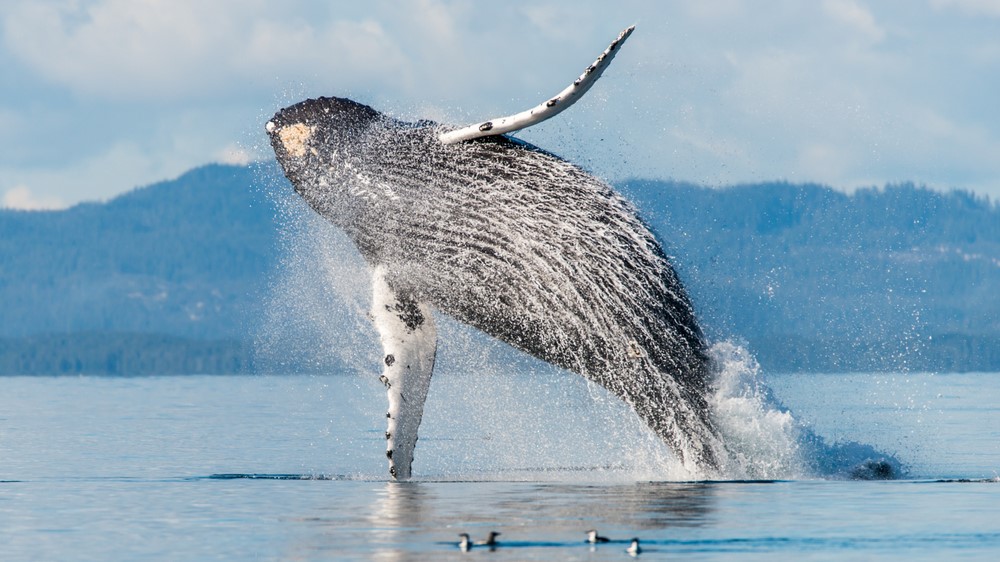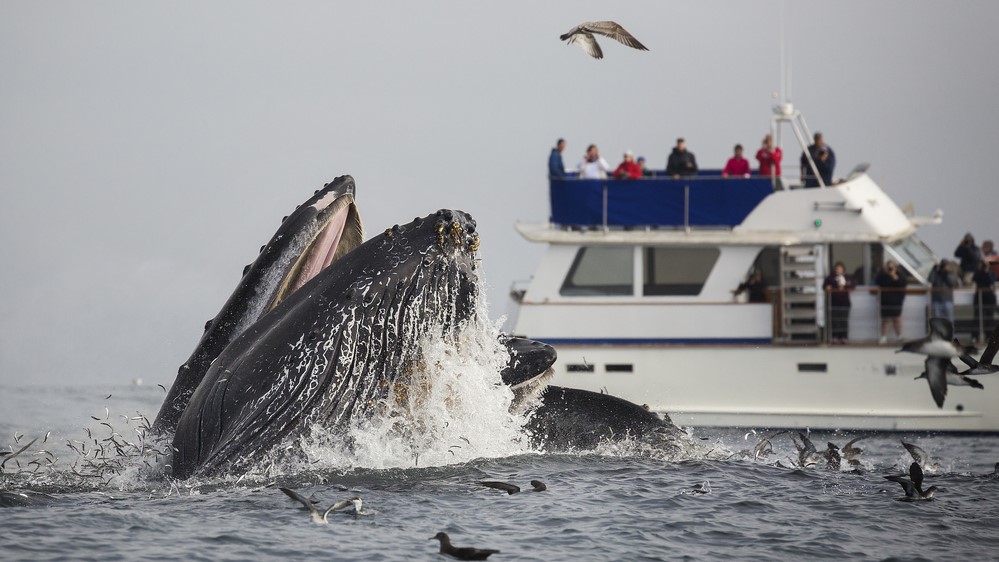Breaching humpback whale body slams boat in Mexico, injuring everyone on board
Local authorities suggest the young humpback did it on purpose.

Watching a gigantic whale fly through the air as it breaches the ocean's surface is one of the most beautiful sights in the natural world. But for the crew of one boat in Mexico, that experience quickly turned into a nightmare when they got too close to a 7-ton (6.4 metric tons) humpback whale that subsequently body slammed them, wrecking the vessel and injuring everyone on board.
The unusual incident occurred May 14 in the bay surrounding the port town of Topolobampo, in the Ahome region in the northwestern state of Sinaloa, at around 6:00 p.m. local time. The humpback — a juvenile despite its hefty size — rose out of the water and landed directly on top of a small boat named "Andrea," nearly capsizing the vessel. A video of the incident accompanied by shocked cries from onlookers was shared on Twitter by Mexican newsite Línea Directa.
All four of the people on board — two men and two women, who are all thought to be local residents — were taken to the hospital. One of the women suffered a broken leg and one man sustained serious injuries to his head and ribs, according to Mexico News Daily. Pictures shared on Twitter by one eyewitness show the mangled remains of the "Andrea," with a collapsed roof, warped metal bars and blood covering the seats, although it is unclear if the blood belonged to the whale or the injured crew.
Local authorities have suggested that the "Andrea" had been harrassing the humpback whale, which may have caused the distressed cetacean to purposefully breach on top of the vessel, according to Mexico News Daily. However, it's also possible that the body slam that wrecked the boat was accidental.
Related: Rare white humpback whale spotted swimming with dolphins Down Under
The Environmental Protection Agency of Mexico (Profepa) is currently investigating the incident. Officials will assess the injuries of the whale, which is still in the bay surrounding Topolobampo, and if the animal is seriously hurt then "Andrea"'s crew could be fined under Mexican law for injuring a protected species, according to Línea Directa. The boat was also operating without a mandatory navigation license plate and its crew members were not wearing life jackets when the accident occurred.
The eastern Pacific population of humpback whales, which migrate to Mexico between mid-December and late March to breed, is the only humpback population on Earth that is still listed as threatened by extinction despite a global recovery in numbers after the whaling industry declined, according the National Oceanic and Atmospheric Administration (NOAA).
Sign up for the Live Science daily newsletter now
Get the world’s most fascinating discoveries delivered straight to your inbox.
Officials have called upon local boat captains to keep a respectful distance from visiting whales. "Please do not get too close to the whales," Gerardo Vargas, mayor of Ahome, told Mexico News Daily. "We can enjoy their beauty, but at a distance."
Harassment from whale-watching vessels is listed as one of the main threats to humpback whales, along with vessel strikes and entanglement in fishing gear, according to NOAA. In 2021, a study published in the journal Frontiers in Marine Science, revealed that humpback whales in Hawaii that were closely pursued by whale-watching boats displayed increased swim speed, higher respiration rates and changes in diving behavior, which are all signs of distress and can be very energetically expensive for whales.

"Whale watching can become a larger problem if it continually disrupts critical behaviors such as nursing, breeding, and feeding, as these are crucial for populations to grow and continue to recover," study lead author Jens Currie, the chief scientist of the Pacific Whale Foundation in Hawaii, told Live Science.
However, experts are unsure if the juvenile humpback's body slam was a form of retaliation or an unlucky accident.
"I do not think the whale was retaliating against harassment," Currie said. "The whale was likely unaware of the boat's close proximity." Breaching onto a vessel has the potential to also injure the whale itself and a more likely response to harassment would be to swim away from the area, he added.
"It is very hard to say," Lorenzo Fiori, an ecologist at the Auckland University of Technology in new Zealand who specializes in cetacean behavior, told Live Science. The video does not show what happened prior to the incident, which is necessary if you want to attribute motive, he added. "In any case, approaching a whale too close is definitely a bad choice, especially when it is active at the surface."
This is not the first instance in which a humpback whale may have purposefully caused injuries to humans. In 2020, two snorkelers were hospitalized in Australia after swimming too close to a humpback whale mother and her calf. In this case, the humpback charged the snorkelers and hit them with her tail and pectoral fin.
Originally published on Live Science.

Harry is a U.K.-based senior staff writer at Live Science. He studied marine biology at the University of Exeter before training to become a journalist. He covers a wide range of topics including space exploration, planetary science, space weather, climate change, animal behavior and paleontology. His recent work on the solar maximum won "best space submission" at the 2024 Aerospace Media Awards and was shortlisted in the "top scoop" category at the NCTJ Awards for Excellence in 2023. He also writes Live Science's weekly Earth from space series.










